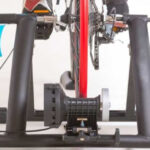If electric bikes still feel intimidating, and you’ve got some bike riding experience under your belt, chances are the image in your mind is something akin to the Ride1Up Cafe Cruiser. In the crowded direct-to-consumer e-bike market, nearly every brand features a model echoing this style, component set, and accessible price, all marketed as the perfect entry point into the world of electric mobility.
However, labeling the Cafe Cruiser as simply an “entry-level” electric bike might be misleading. While the concept of a relaxed beach cruiser with a comfortable saddle and robust tires sounds inviting, the reality is that this bike tips the scales at a substantial 65 pounds, even before you factor in the added electric motor. The familiar light and easy ride of a traditional cruiser transforms into something altogether different when you add that weight and power. Coupled with a less refined computer system, achieving the ideal level of pedal assistance can be tricky. Finding your balance and feeling truly in control on what essentially becomes a low-speed electric motorcycle can be unexpectedly unnerving for some.
That being said, the Ride1Up Cafe Cruiser, for what it is, isn’t a poor choice. It packs a potent 750W rear hub motor that conquers challenging hills with ease, along with integrated lights, a practical kickstand, and a rear rack capable of carrying up to 150 pounds of cargo. The battery life also impresses, offering extended range. Yet, particularly considering tragic incidents involving similar bikes, such as the one involving Molly Steinsapir and the RadRunner 2, it’s crucial to consider if this is truly the best recommendation for novice cyclists or those of smaller stature.
Alt text: Cream Ride1Up Cafe Cruiser step-through electric bike displaying its comfortable upright riding position and substantial tires.
The Cafe Cruiser presents itself as a substantial bike, built around an alloy frame that neatly conceals the electronic components internally. It’s offered in both step-through and step-over frame styles. The model tested here, the step-through, still felt a touch on the taller side for a rider of 5’2” (Ride1Up specifies a minimum rider height of 5’, though leg length can be a factor). Both frame styles share the same 65-pound weight and feature curved cruiser handlebars that promote an upright riding posture, allowing for relaxed elbows and a secure position on the generously padded, oversized seat.
Despite its affordability within the e-bike market, the Cafe Cruiser delivers notable power. Its 750W rear hub motor provides five distinct levels of pedal assistance. Classified as a Class 3 e-bike, it’s capable of reaching speeds up to 28 miles per hour with pedal assist. Reaching speeds over 20 mph through pedaling alone is easily achievable. Furthermore, a thumb throttle located on the left handlebar offers on-demand assistance up to 20 mph. (Engaging the throttle inadvertently while maneuvering the bike at walking speed can result in a surprising surge of power.)
To manage this power, the Cafe Cruiser incorporates hydraulic disc brakes equipped with an electronic cut-off sensor. This safety feature ensures that applying the brakes instantly disengages power from the motor. Powering the bike is a 48V battery utilizing Samsung cells, promising a range of 30 to 50 miles, contingent on rider weight and riding conditions. During a two-week test period involving short neighborhood trips of 1 to 2 miles, the battery level barely registered any depletion, even with a lighter rider around 115 pounds.

